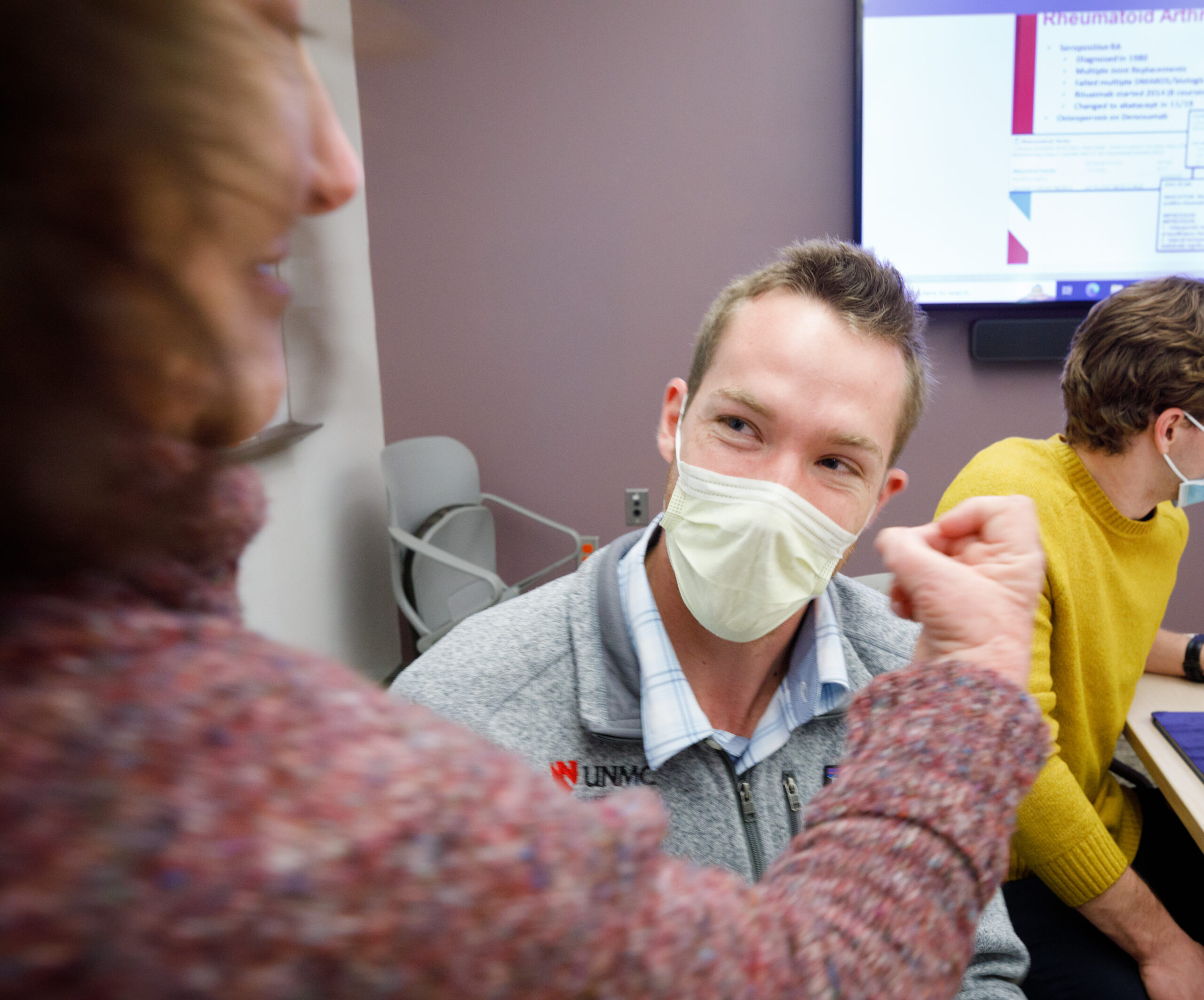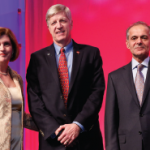 After intense academic classroom studies, University of Nebraska College of Medicine students in Omaha are able to put what they are learning in practice through the university’s Live Patient Experience (LPE) program, led by the Division of Rheumatology and Immunology. The LPE gives students real-life experience with patients and can serve as motivation to consider a career in rheumatology—one way to address the workforce shortage within the specialty, says Amy Cannella, MD, MS, RhMSUS, Gerald F. Moore Professor in Rheumatology and Rheumatology Fellowship Program director at the University of Nebraska Medical Center. “We are shameless promoters of rheumatology,” she says.
After intense academic classroom studies, University of Nebraska College of Medicine students in Omaha are able to put what they are learning in practice through the university’s Live Patient Experience (LPE) program, led by the Division of Rheumatology and Immunology. The LPE gives students real-life experience with patients and can serve as motivation to consider a career in rheumatology—one way to address the workforce shortage within the specialty, says Amy Cannella, MD, MS, RhMSUS, Gerald F. Moore Professor in Rheumatology and Rheumatology Fellowship Program director at the University of Nebraska Medical Center. “We are shameless promoters of rheumatology,” she says.
Dr. Cannella was behind a curriculum restructuring at the medical school, which resulted in the creation of the LPE.
History & Logistics
The concept of doing LPEs at the University of Nebraska College of Medicine came about when Dr. Cannella began teaching rheumatology to second-year medical students in 2014; the first LPE took place that same year. During a 2017 curriculum revision, an LPE was added for first-year medical students.
The LPEs take place during the preclinical phase of training. The LPE for first-year medical students is held at the conclusion of the musculoskeletal-integument block. Patients are selected from rheumatology, dermatology and orthopedic clinics. Because students have not yet studied organ systems in depth, the rheumatology patients included in the LPE typically have rheumatoid arthritis (RA), osteoarthritis or gout rather than a more complex rheumatic disease.
The LPE for second-year medical students takes place at the conclusion of the year, during the multi-organ system block. Having completed the study of all organ systems, students are tasked with synthesizing more complex diagnostic and therapeutic strategies. At this time, students meet patients with multi-system rheumatic disease, such as lupus, scleroderma, vasculitis, myositis and severe RA.
“They have heard the material in lecture and worked through it in the anatomy labs, hands-on POCUS [point-of-care ultrasound], team-based learning and problem-based learning cases, video games/modules and an immunology lab experience. We wrap everything up by putting a patient’s name, face and story to the diseases,” Dr. Cannella says.

A second-year medical student, Luke Siedhoff, listens intently to a patient
telling her story.
Students are divided into groups of about 13 each, and the groups rotate to different educational rooms to meet with a total of 10 patients. Each patient is there with a faculty member, often someone who is that patient’s actual doctor. That person helps facilitate discussion as needed and can answer clinical questions students may have, Dr. Cannella says.


